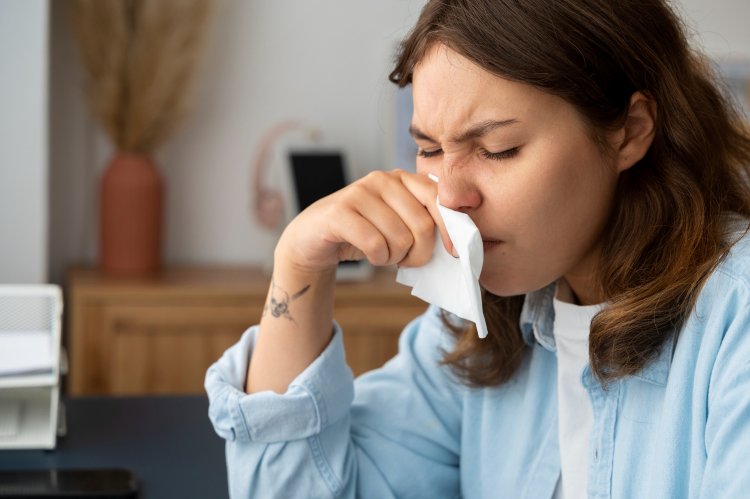Household Dust Mites, Mites, and Allergens: A Comprehensive Review
Household dust mites, mites, and other microscopic allergens are pervasive in indoor environments and can trigger a range of allergic reactions in humans. These microorganisms thrive in various home settings, especially where warmth, humidity, and food sources like dead skin cells are abundant. Understanding their biology, habitats, and impacts on human health is essential for effective management and allergy reduction.

Types of Microscopic Allergens
Dust Mites (Dermatophagoides spp.)
Description: Dust mites are tiny arachnids, approximately 0.2-0.3 mm long. They are not parasitic but feed on organic detritus, particularly the dead skin cells shed by humans and pets. The two most common species are Dermatophagoides farinae and Dermatophagoides pteronyssinus.
Habitat: Dust mites thrive in warm (20-25°C or 68-77°F), humid (70-80% relative humidity) environments. They are commonly found in mattresses, pillows, carpets, upholstered furniture, and stuffed toys.
Health Impact: The primary allergens are proteins found in mite feces and body parts. These can cause allergic rhinitis, asthma, atopic dermatitis, and other allergic conditions. Sensitization occurs when the immune system overreacts to these proteins.
Other Mites
Storage Mites (Acaridae family)
Description: Storage mites, including species like Acarus siro, are typically found in stored grains and foods.
Habitat: These mites thrive in environments where food is stored, particularly in places with high humidity and temperatures.
Health Impact: Storage mites can cause respiratory and skin allergies, particularly in people with occupational exposure, such as farmers and grain handlers.
Bird Mites (Dermanyssus gallinae)
Description: Bird mites are parasitic mites that infest birds and poultry.
Habitat: Found in bird nests, poultry farms, and occasionally in homes, especially if birds have nested in the eaves or roof spaces.
Health Impact: Bird mites can bite humans, causing itching and dermatitis, although they do not live on humans.
Mold Spores
Description: Molds are fungi that release microscopic spores into the air, which can become airborne and inhaled.
Habitat: Molds grow in damp, warm areas with poor ventilation, such as bathrooms, basements, kitchens, and around leaks.
Health Impact: Mold spores can trigger allergic reactions, including nasal congestion, sneezing, and respiratory issues like asthma. Common allergenic molds include Aspergillus, Penicillium, and Cladosporium.
Prevention and Management
Environmental Control
Humidity Control: Maintaining indoor humidity levels below 50% is crucial for reducing dust mite populations. This can be achieved through the use of dehumidifiers, air conditioners, and proper ventilation.
Regular Cleaning:
- Vacuuming: Use a vacuum cleaner equipped with a HEPA filter to trap dust mites and their allergens. Vacuum carpets, rugs, and upholstered furniture regularly.
- Bedding: Wash bed linens, blankets, and pillowcases weekly in hot water (at least 130°F or 54°C) to kill dust mites. Consider using a dryer on a high heat setting.
- Dusting: Use a damp cloth to dust surfaces to avoid stirring up allergens into the air.
- Allergen-Impermeable Covers: Encase mattresses, pillows, and box springs in allergen-proof covers to create a barrier against dust mites.
Chemical Treatments
Acaricides: These chemical agents are designed to kill mites. While effective, they should be used with caution to avoid potential toxicity and environmental impact.
Anti-Allergen Sprays: These sprays can neutralize allergens from dust mites, mold, and pet dander. They can be used on bedding, carpets, and upholstered furniture.
Lifestyle Adjustments
Reducing Clutter: Minimizing clutter reduces dust accumulation and provides fewer habitats for mites. Store items in plastic bins or closed cabinets.
Pet Management: Regular grooming and bathing of pets can decrease the amount of pet dander in the home. Keep pets out of bedrooms and off furniture.
Ventilation: Ensure good ventilation in all rooms, especially in areas prone to moisture like bathrooms and kitchens. Use exhaust fans or open windows to reduce humidity levels.
Integrated Pest Management (IPM)
Inspection and Monitoring: Regularly inspect areas prone to mite infestation. Use sticky traps to monitor mite populations.
Sanitation: Maintain high standards of cleanliness to reduce food and habitat sources for mites.
Exclusion: Seal cracks and gaps in walls, floors, and windows to prevent mites from entering the home.
In conclusion, dust mites, other mites, and mold spores are common in household environments, presenting significant health risks for sensitive individuals. Effective management involves a multi-faceted approach, including environmental control, chemical treatments, lifestyle adjustments, and integrated pest management. By understanding these allergens' nature and implementing comprehensive strategies, it is possible to mitigate their impact on health and improve the quality of life for allergy sufferers.
Disclaimer: The information provided in this article is for educational purposes only and should not be considered medical advice. If you have any health concerns or are experiencing symptoms, it is important to consult with a healthcare professional, such as a doctor or clinic, for proper diagnosis and treatment. Always seek the advice of your doctor or other qualified health provider with any questions you may have regarding a medical condition. Do not disregard professional medical advice or delay in seeking it because of something you have read in this article.
#Hashtags: #Allergies #DustMites #MoldSpores #HomeHealth #EnvironmentalControl #PestManagement #HealthyLiving #HomeCleanliness #AllergyPrevention #HealthTips
What's Your Reaction?





















